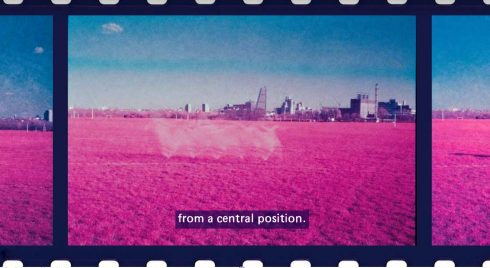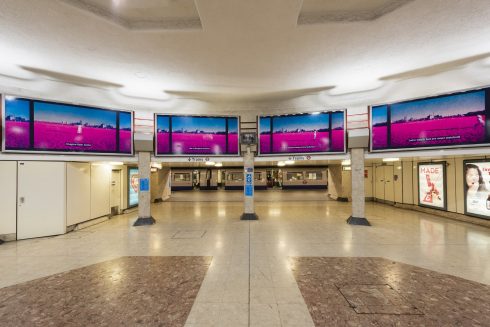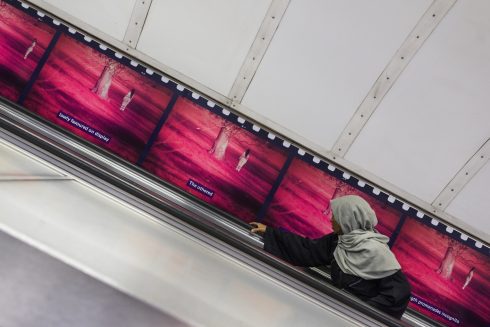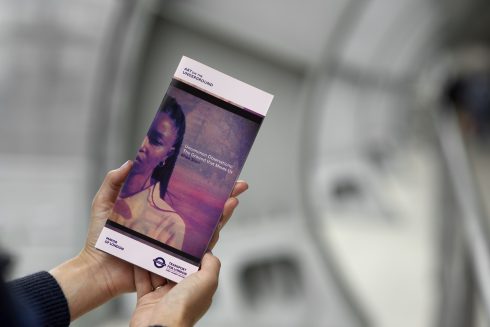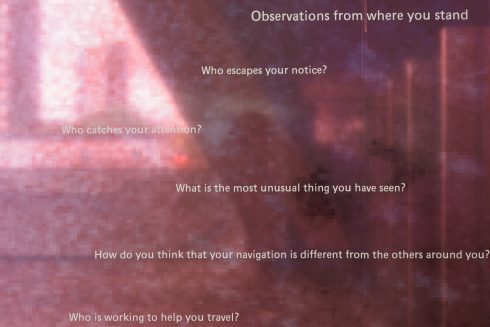Uncommon Observations: The Ground that Moves Us is an ambitious multi-site artwork by London based artist Rhea Storr. The artwork launched on 22 July 2022 and will remain on view for a year.
This new body of work, presented as a series of large-scale captioned photographs, will be exhibited in four London Underground stations across the capital; Stratford, Bethnal Green, Notting Hill Gate and Heathrow Terminal 4.
Central to Rhea Storr’s photographic and film work is her writing and research around the production and circulation of images of Black subjects. This research asks how can an image share knowledge? How might it be a call to come together as a community? How can an image challenge or confront its audience? Can it be a projection of joy and liberation? These questions form the starting point for the six new sequences of photographic artworks for London Underground.
The new work was created using an outdated military surveillance photographic film called aerochrome, once used for monitoring and control and now used with experimental openness. This film turns reflections of infra-red light into vivid shades of red and pink and in contrast centres bodies, drawing focus to human movement. The images were produced during a photoshoot with artist Jade Blackstock and staged in spaces of common land across London.
The photoshoot played with who is looking at who, who is visible and who is in control of the image capture. The movements documented in the images shift between being directed, playful and liberatory. Concerned with the readability of images, particularly those of Black and mixed-race women, Storr’s Art on the Underground commission extends this and proposes that bodies, specifically Black bodies, are not fixed, but instead constantly moving, from being observed and admired to moving to evade or refuse monitoring.
Running parallel to the photoshoot, Storr conducted a series of research conversations with London Underground station staff to gain further understanding of their work in stations. These conversations focussed on their movement and visibility in stations, asking what they notice about people? What aspects of travelling are hidden? How does race, visibility or dress affect the way that they or the people they observe move around the Underground? These conversations informed the artist’s writing process, producing captions for the images. Written in the artist’s voice the captions, with the images, read like stills from a film. As viewers move past these static photographs in stations, along passageways, escalators and through ticket halls, they will experience the artworks as if in motion, catching sequences of Storr’s words and photographs almost as moving images and messages.
Exhibiting these works in public space is key to how we receive their meaning. We encounter these images between information notices, advertising, images for consumption and direction, where our movements are choreographed by the station’s design. This artwork asks if it is possible to re-narrate or revise our experiences, as passengers, members of the public, workers, communities, and individuals, in constant movement and under observation.
Rhea Storr said: “These photographs consider the kind of values, power dynamics and aesthetics that we employ when photographing each other. I wanted to think about how being a Black subject in the world shapes how we represent ourselves in photographs. Images are not benign or abstract, they are the product of our circumstances. The history of the photograph is intertwined with work and the industrial revolution, of which the railways played a huge part. Talking to TfL staff about their observations offered many different perspectives, which I felt the need to protect in the final texts- to observe and listen to their stories rather than surveil. I was excited to have the opportunity to work on colour infrared film which produces this vibrant pink hue. I’ll never be able to work in such a considered way on colour infrared film again because the film is obsolete. The film has shaped what is said here. It was important to me to use this military film which has been used as an instrument of violence and otherness, to think critically about visibility and control, particularly when we think about the representation of the Black subject.”
Rhea Storr is an artist/filmmaker who explores the representation of Black cultures and her British-Bahamian heritage. She has a continued engagement with the politics of carnival, focusing often on the performance of women from the Caribbean and its diaspora. Masquerade as a site of protest is an ongoing theme in her work. She is interested in spaces where Black cultures are performed, particularly in rural or contested spaces. Rhea Storr often works with photochemical film and her research revolves around Black British Aesthetics and analogue filmmaking practices. She is heavily involved in not nowhere, an artists’ film co-operative that has a particular focus on analogue film. She is the winner of the Aesthetica Art Prize 2020 and the inaugural Louis Le Prince Experimental Film Prize.

